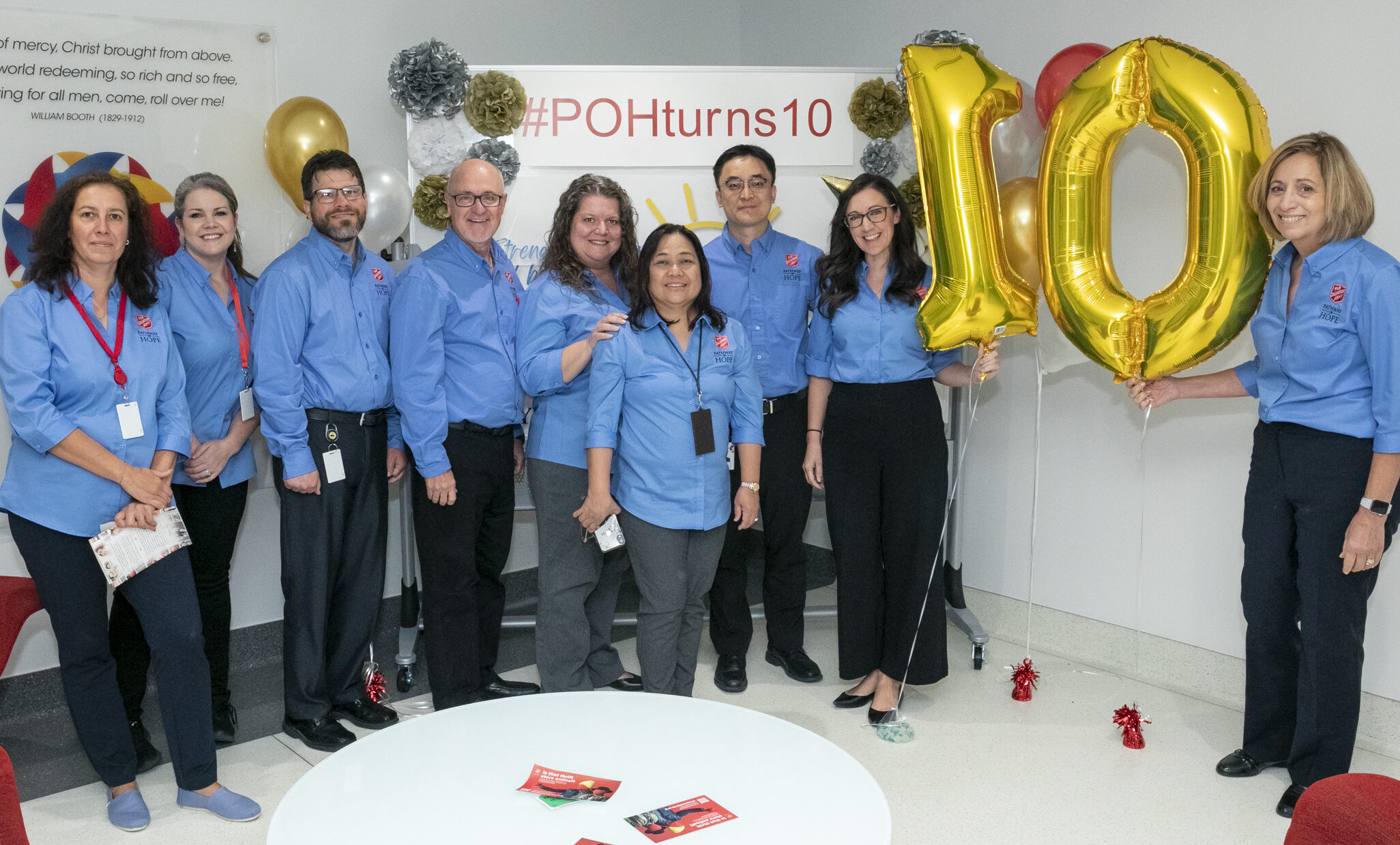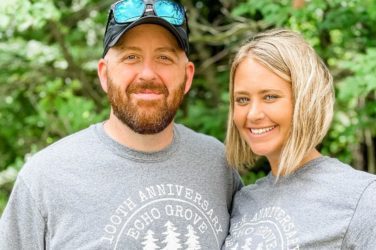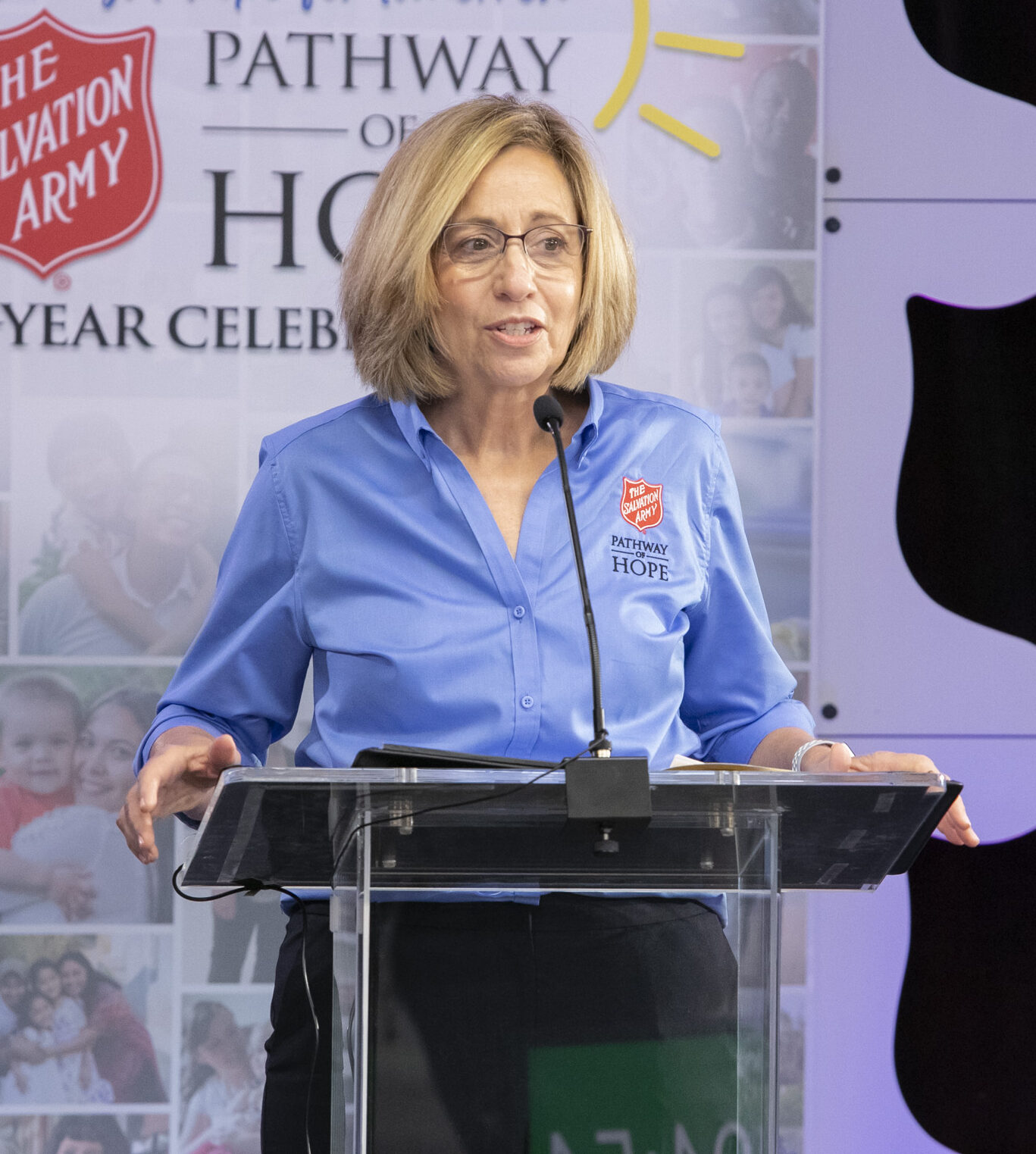 The Central Territory marked the Pathway of Hope (POH) Initiative’s 10-year anniversary with a celebration and symposium themed “Strength for Today and Bright Hope for Tomorrow.”
The Central Territory marked the Pathway of Hope (POH) Initiative’s 10-year anniversary with a celebration and symposium themed “Strength for Today and Bright Hope for Tomorrow.”
The day-long hybrid event captivated the attention of the live and virtual audience of nearly 400 people with dynamic speakers who shared about the initiative’s transformational impact for families experiencing intergenerational poverty. Each underscored the role of hope.
In a call to action, Territorial Commander Commissioner Brad Bailey encapsulated POH’s impetus from a strategic challenge by the National Advisory Board for The Salvation Army to take on a big idea and double its impact to the most vulnerable with existing resources.
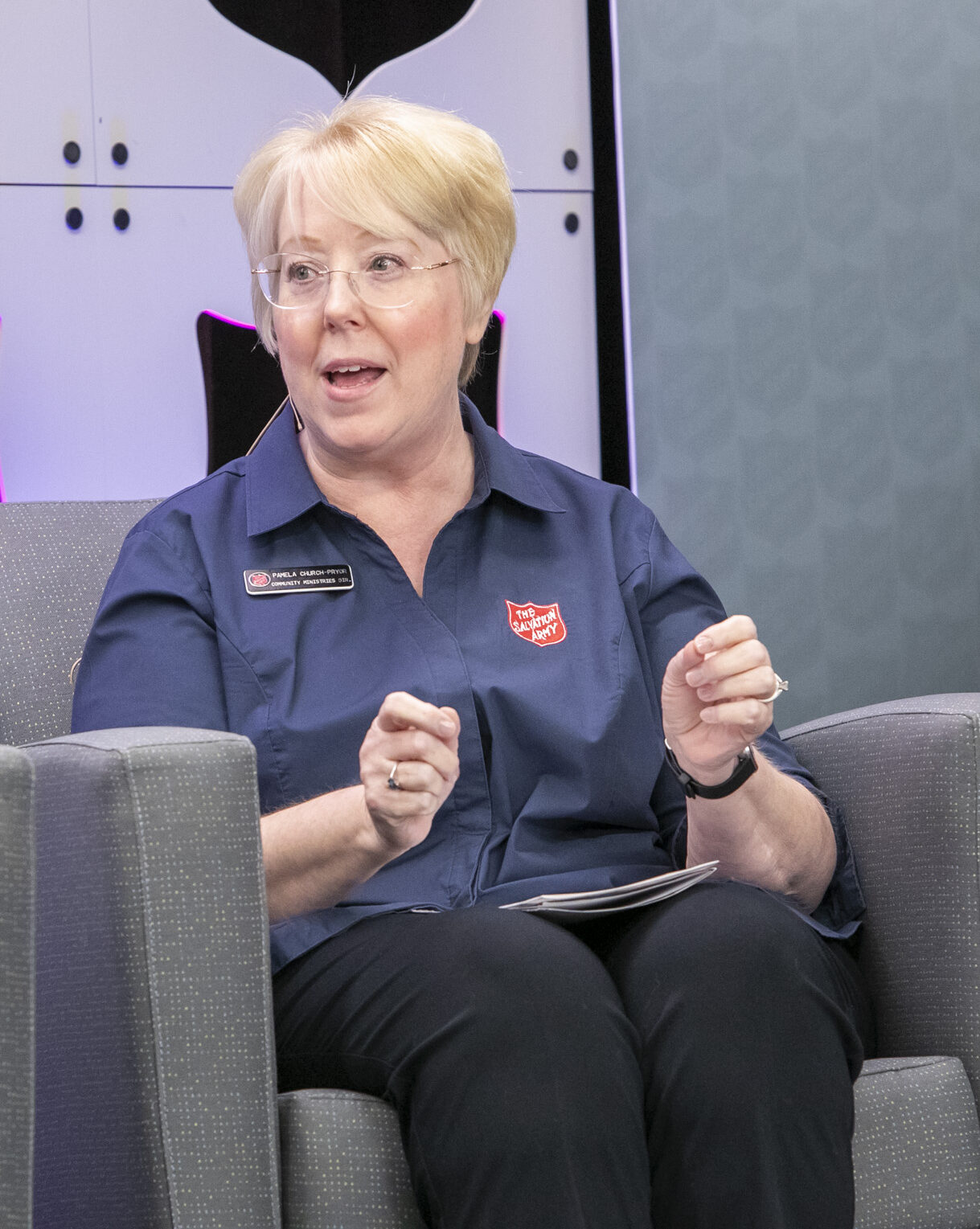 He thanked Commissioners Paul and Carol Seiler, at that time Central territorial leaders, who envisioned the possibilities, created the new approach with the Bridgespan Group and had the confidence in officers and staff on the frontlines to implement it. He also thanked those currently engaged in this hard but fulfilling work, reminding them of the profound truth that when we serve others and enter into their pain with Christ’s love that we are embracing Jesus.
He thanked Commissioners Paul and Carol Seiler, at that time Central territorial leaders, who envisioned the possibilities, created the new approach with the Bridgespan Group and had the confidence in officers and staff on the frontlines to implement it. He also thanked those currently engaged in this hard but fulfilling work, reminding them of the profound truth that when we serve others and enter into their pain with Christ’s love that we are embracing Jesus.
An engaging taped conversation between Commissioners Paul and Carol Seiler gave a more comprehensive and personal account of the genesis and early days of POH, including challenges like changing the donor mindset to long-term investment in the future.
“We have welcomed over 10,000 families and 22,000 children and youth,” said Dr. Maribeth Swanson, territorial social services secretary.
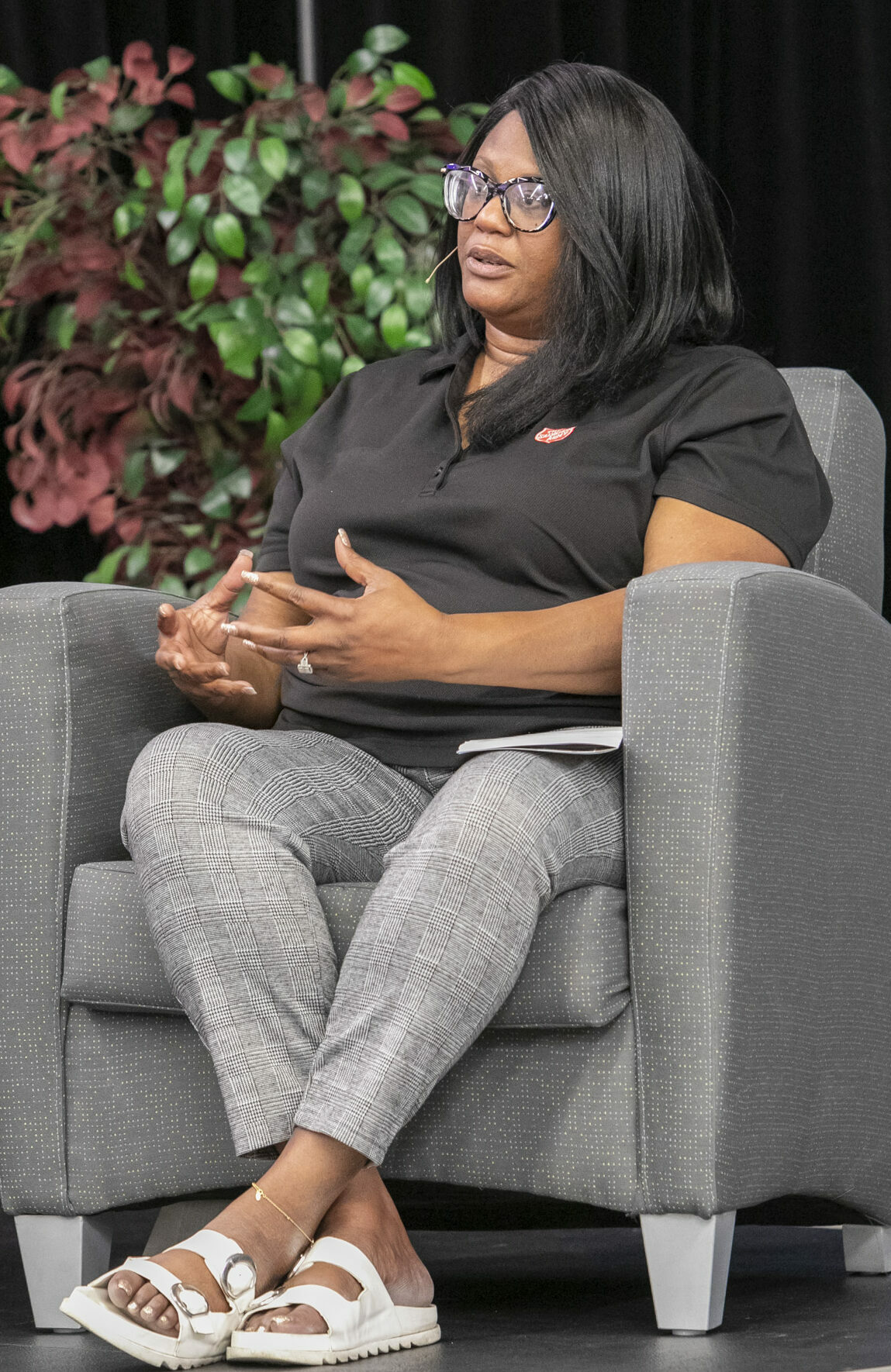
She affirmed the commitment to serving through POH so children who have been impacted by poverty don’t need to experience poverty as adults and its detrimental effects on access to healthcare, quality education, positive socialization and family stability.
“Our overall data confirms that we have, for many outcomes, exceeded our own expectations,” she said. She then shared what we’ve gained and learned as an organization from this work and those we have served over the last decade.
A clinical assessment of hope was given by Dr. Kaye Herth, who is the renowned author of a tool—the Herth Hope Index—that measures hope, and which is used in POH.
Dr. Philip Hong, dean of the School of Social Work at the University of Georgia, gave a presentation on the importance of hope and spirituality in the journey, sharing what he learned especially from focus groups of POH clients while at Loyola University.
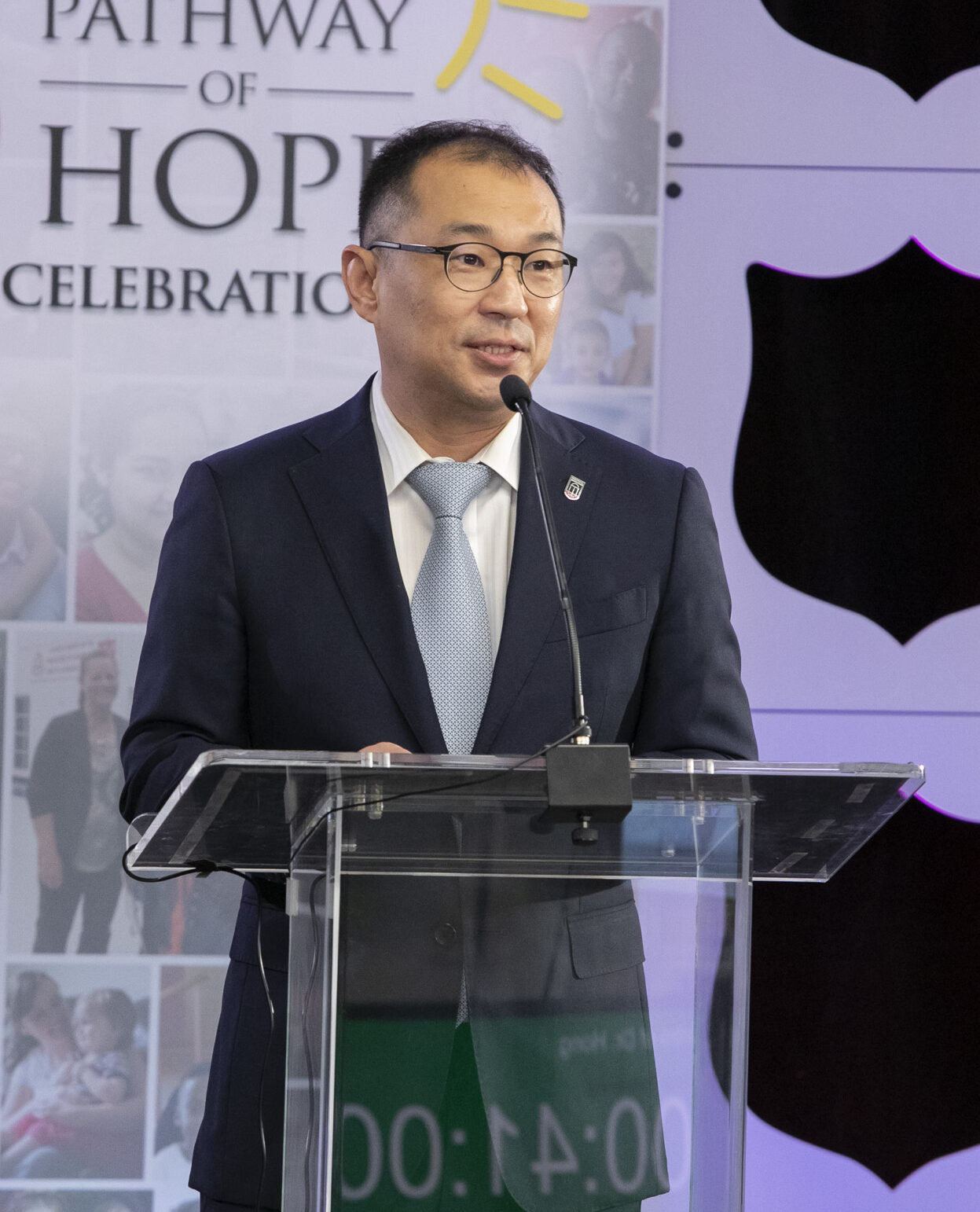 “Pastoral care came up to be a very special and unique kind of support that they received, and also by the case managers that prayers and the pastoral care team was central in not giving up in times of crisis, even in times when they’re losing energy and as a provider how much they could actually give,” he said. “Pastoral care is central to keep us all level when we are facing these crises, whether as providers or those experiencing crises as families.”
“Pastoral care came up to be a very special and unique kind of support that they received, and also by the case managers that prayers and the pastoral care team was central in not giving up in times of crisis, even in times when they’re losing energy and as a provider how much they could actually give,” he said. “Pastoral care is central to keep us all level when we are facing these crises, whether as providers or those experiencing crises as families.”
In a presentation on hope enhancement strategies, Dr. Michael Smith, assistant territorial social services secretary and POH director, drilled down on what frontline caseworkers can do to help clients increase hope.
“As families come and interact with us, they are going to have to draw on our hope for a while because they’ve lost their hope. So, it’s important that we are hopeful people, optimistic and confident,” he said.
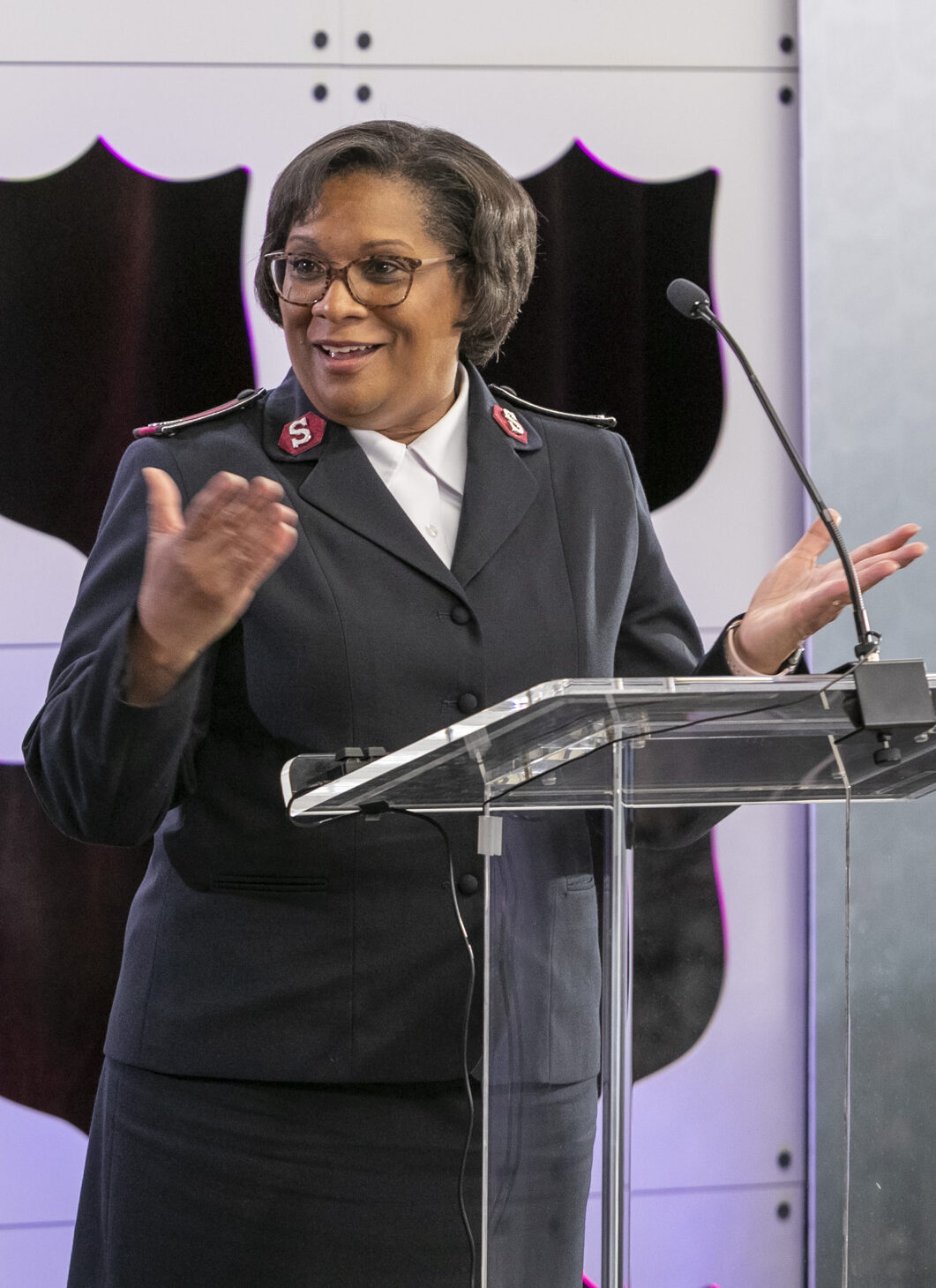 Recognizing excellence in Pathway of Hope delivery, the latest awards were presented by Territorial Pathway of Hope Manager Linda Brinker and Territorial Assistant Chief Secretary Lt. Colonel Paul Smith. This year the achievement award was given to Kent County, Mich., Social Services and the outstanding award was given to the Fergus Falls, Minn., Corps. Since April 2015, 35 sites have earned the achievement award, and 13 sites have earned the outstanding award.
Recognizing excellence in Pathway of Hope delivery, the latest awards were presented by Territorial Pathway of Hope Manager Linda Brinker and Territorial Assistant Chief Secretary Lt. Colonel Paul Smith. This year the achievement award was given to Kent County, Mich., Social Services and the outstanding award was given to the Fergus Falls, Minn., Corps. Since April 2015, 35 sites have earned the achievement award, and 13 sites have earned the outstanding award.
Linda Brinker, territorial POH manager, moderated a panel discussion with Captains Anthony and Elyse Nordan, Fergus Falls, Minn., corps officers; Pamela Church-Pryor, caseworker at the Norridge Citadel, Ill., Corps; Rachelle May, caseworker at the Ottawa, Ill., Corps; and Tracie Smith, Kansas/Western Missouri assistant divisional social ministries director. The panelists each shared their experiences of successful approaches in meeting family and community needs.
A presentation on Sustainability and Building Community Networks was given by Karla Clark, territorial executive director of development, who spoke on proven community-based fundraising strategies to sustain POH in the coming years.
Lt. Colonel Margaret Davis, national social services secretary, shared the national perspective of how POH has impacted the Army. She thanked the Central Territory for its vision and creativity, planning and hard work, and for being the inspiration in leading the charge across the nation, as well as around the world, in this important work.
“We continue to look to you, the pioneers of Pathway of Hope, as we strive to better serve and produce desired outcomes in the future,” she said.
Not only has POH expanded throughout the United States, it is increasingly being implemented internationally like in Canada and Norway, and representatives from both attended the celebration virtually.
